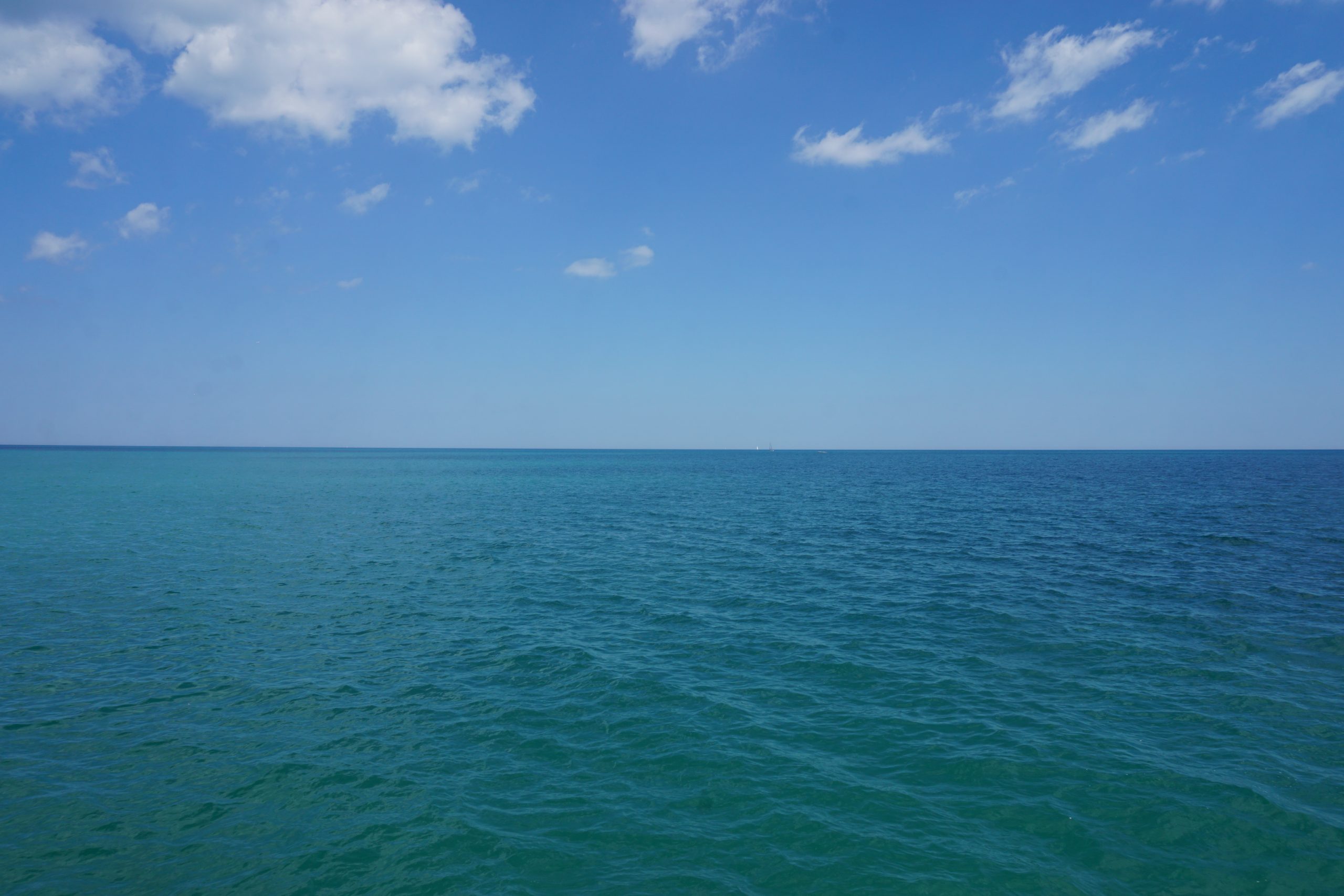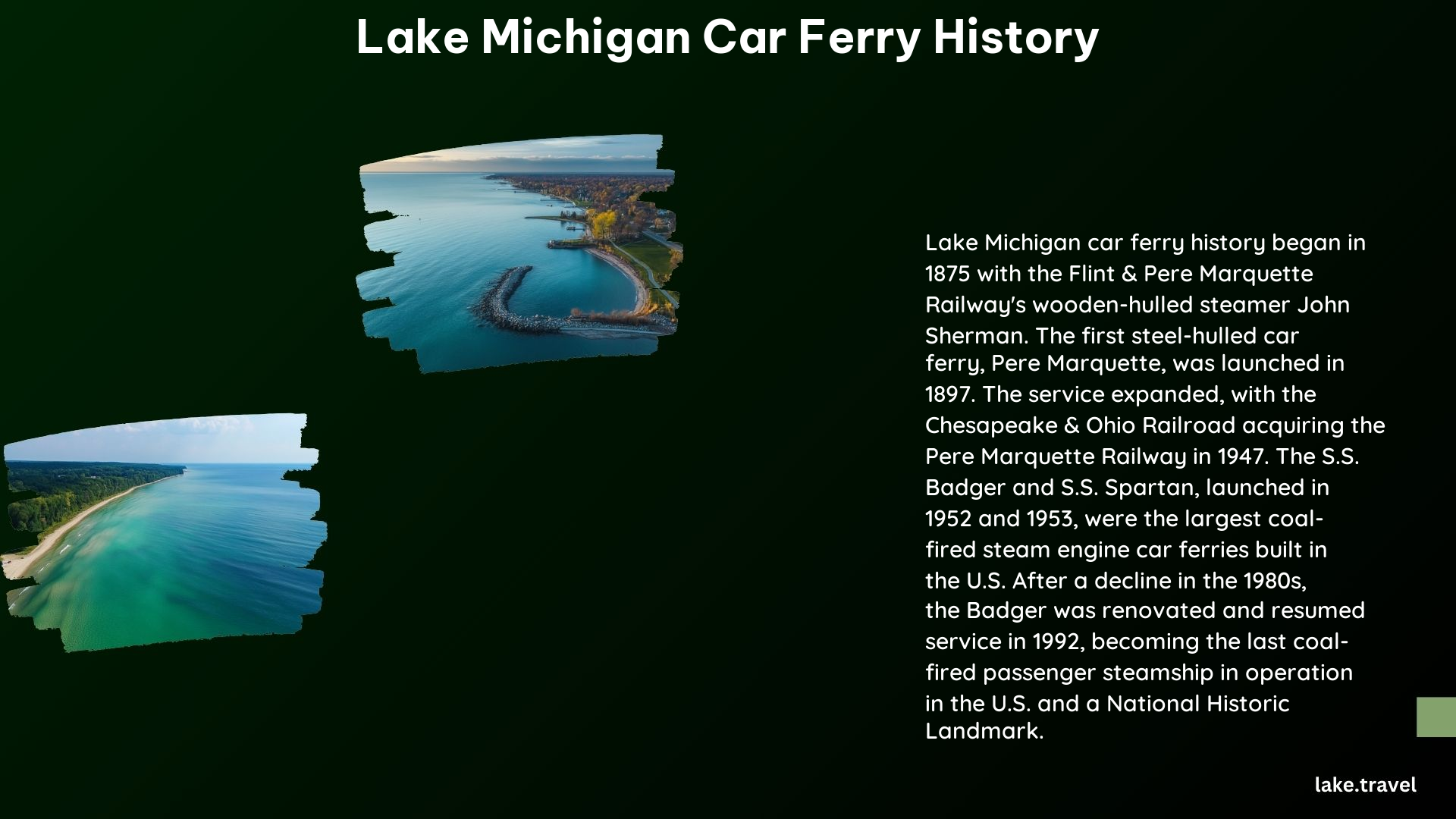The history of the Lake Michigan car ferries dates back to the late 19th century, when the first ferry service was launched to transport grain, packaged freight, and passengers across the lake. Over the decades, the car ferry industry on Lake Michigan expanded, reached its peak in the 1950s, and then faced a decline before experiencing a revival in the 1990s. Today, the SS Badger, the last remaining example of the Great Lakes rail/car ferry design, continues to operate as a historic landmark.
Early Years

The car ferry industry on Lake Michigan began in the 1870s, with the Flint and Pere Marquette Railway launching the first ferry service across the lake. The 175-foot steamer John Sherman was used to transport goods and passengers between Ludington, Michigan, and Sheboygan, Wisconsin. By the 1890s, the service had expanded to include Manistee, Michigan, and Manitowoc, Wisconsin.
In 1892, John M. Ashley, the president of the Ann Arbor Railroad, introduced the first railroad car ferry, the 260-foot wooden-hulled Ann Arbor 1, which carried railroad cars loaded with freight between Frankfort, Michigan, and Kewaunee, Wisconsin. The following year, the Pere Marquette, the first steel-hulled car ferry, was launched and set the standard for future car ferries on the Great Lakes.
Expansion and Peak

The early 1900s saw the expansion of the car ferry industry, with the formation of the Pere Marquette Railway through the merger of several railroads. This reduced the number of railroads needing ferry service, but the industry continued to grow.
In 1940, the City of Midland, the first car ferry with passenger accommodations on two decks, was launched in Manitowoc. The industry reached its peak in 1955, with 205,000 passengers and 204,460 freight cars transported in 6,986 crossings of Lake Michigan.
Decline and Revival
The car ferry industry on Lake Michigan began to decline in the 1980s, as Chessie abandoned its car-ferry service to Milwaukee and Manitowoc. In 1983, Chessie sold its three remaining ferries to Glen Bowden and George Towns, who formed the Michigan-Wisconsin Transportation Co. However, this company ceased operations in 1990, and the SS Badger was laid up.
In 1991, Charles Conrad purchased the Badger, Spartan, and City of Midland, and the Lake Michigan Carferry Service was established. The Badger resumed service in 1992, carrying 115,000 passengers and 34,000 vehicles across the lake.
Current Status
Today, the SS Badger is the last remaining example of the Great Lakes rail/car ferry design. It has been designated a Registered Wisconsin Historic Site, named Ship of the Year by the Steamship Historical Society of America, listed on the National Register of Historic Places, and designated a National Historic Landmark.
The Badger continues to operate a seasonal service between Ludington, Michigan, and Manitowoc, Wisconsin, from mid-May to mid-October. It has a length of 410 feet, a speed of 18 mph, and a capacity of 620 passengers and 180 autos. The Badger makes nearly 490 crossings per year, making it a significant part of the transportation infrastructure and a beloved tourist attraction on Lake Michigan.
